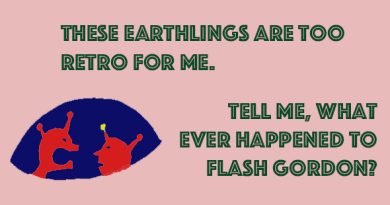Sleep into the future with NASA
Sleeping for Science
With the passing John Glenn, along with all the recent changes in our country, you might be wondering if it’s possible to honor the memory of a great man while sleeping away the next few months to regain sanity. Personally, I’m tempted to just crawl into bed and wake up after everyone has calmed down.
According to various sources, NASA can help with that.
For those looking for a new gig as a muscle and bone atrophy guinea pig (yes, it’s a mouth full), NASA offers a bed rest study at the Johnson Space Center in Houston, Texas. Of course, it helps to come into the program with a decent fitness routine and long attention span, as the latest news from NASA and an article of Wired states the study takes about three months.
Designed to measure how the human body is affected by a lack of gravity, the various tests conducted require that the participant be in good physical shape prior to applying, as well as being aware that some bone loss is expected.
The bed-rest study facility at the University of Texas Medical Branch is part of the program developed by the Flight Analog Research Unit (FARU). Beds that appear to closely resemble your average hospital bed are fitted to replicate gravitational effects based on various settings. These put the appropriate amount of strain (or lack thereof) on your body for microgravity to be observed via human experimentation.

So how much does a research participant get paid to perhaps prevent an astronaut from numerous chiropractic visits? According to Kyle Taylor of Penny Hoarder, that number is roughly $5,000 per month. For a study that continues a little under three months, Forbes contributor Maseena Ziegler reported that the total adds up to $18,000.
In Ziegler’s interview with Dr. Roni Cromwell, one of the study’s senior scientists, the intense decrease in muscle usage in space (floating is just as effortless as it sounds), muscles atrophy and bone density lessens. Similarly, Cromwell stated, “by putting someone in bed for a long time, there is also atrophy of the muscle and atrophy of bone density.”
Ziegler also interviewed Joe Neigut, a project manager at the Johnson Space Center, who elaborated: “Being able to test new ideas on Earth saves invaluable flight time. What the bed rest does to their [test subjects] physiologically and how the exercise countermeasures benefits their physiology helps us better prepare and protect astronauts when they are in space. In fact, how it affects the physiology can be applied to everyone on earth.”
In other words, that is truly one small nap for man, one giant leap for mankind.
The study has been going for more than eight years now, and “countermeasures,” which basically entail physical tasks and exercises meant to reduce harmful effects of muscle/bone atrophy include treadmill and squat sessions. Albeit, these exercises are not done in their typical fashion, and may be switched up to vertical or horizontal positions to better replicate the experience of NASA’s astronauts.
If that sounds a little bit like work, this is where the physical and mental health requirement comes in. Kelly Humphries, NASA’s news chief, clarified that this was not a job for those looking to be idle in line with their current lifestyle. “Subjects need to be very healthy,” he said, partially due to the requirements put on actual astronauts but also to reduce the risk of serious problems after the study’s completion.
Not only are subjects required to go through an Air Force physical, but their psychological health is under examination as well. Dr. Cromwell explained that, “Not every type of person can tolerate an extended time in bed.” Tests and screenings are done to ensure that you won’t end up sending a couch-potato wannabe to the ICU … or the psych ward.
Mental health is also preserved, to some extent, through self-guided usage of time. Participants are encouraged to remain goal-oriented, whether it’s finishing their book list, engaging in career advancement through distance-learning, or picking up a new language. Visitors are also allowed, and all activity is closely monitored. As for one of many Americans’ favorite activities (eating), the menu is not astronaut food as often rumored, but a calorically balanced diet specifically measured to ensure the study participant does not gain or lose significant weight.
If all this has ignited some interest to apply, the website listed for applicants sadly no longer has a valid link. However, you can contact the folks at NASA by calling 202-358-0001 (their number for public inquiries) or 281-483-5111 to reach the Johnson Space Center.
For a more thorough analysis on the process, past participants’ experiences, and scientific answers to common questions, feel free to check out Wired’s article.
Top photo from NASA

Megan Wallin is a young writer with a background in the social sciences and an interest in seeking the extraordinary in the mundane. A Seattle native, she finds complaining about the constant drizzle and overabundance of Starbucks coffee therapeutic. With varied work experiences as a residential counselor, preprimary educator, musician, writing tutor and college newspaper reporter/editor, Megan is thrilled to offer a unique perspective through writing, research and open dialogue.

